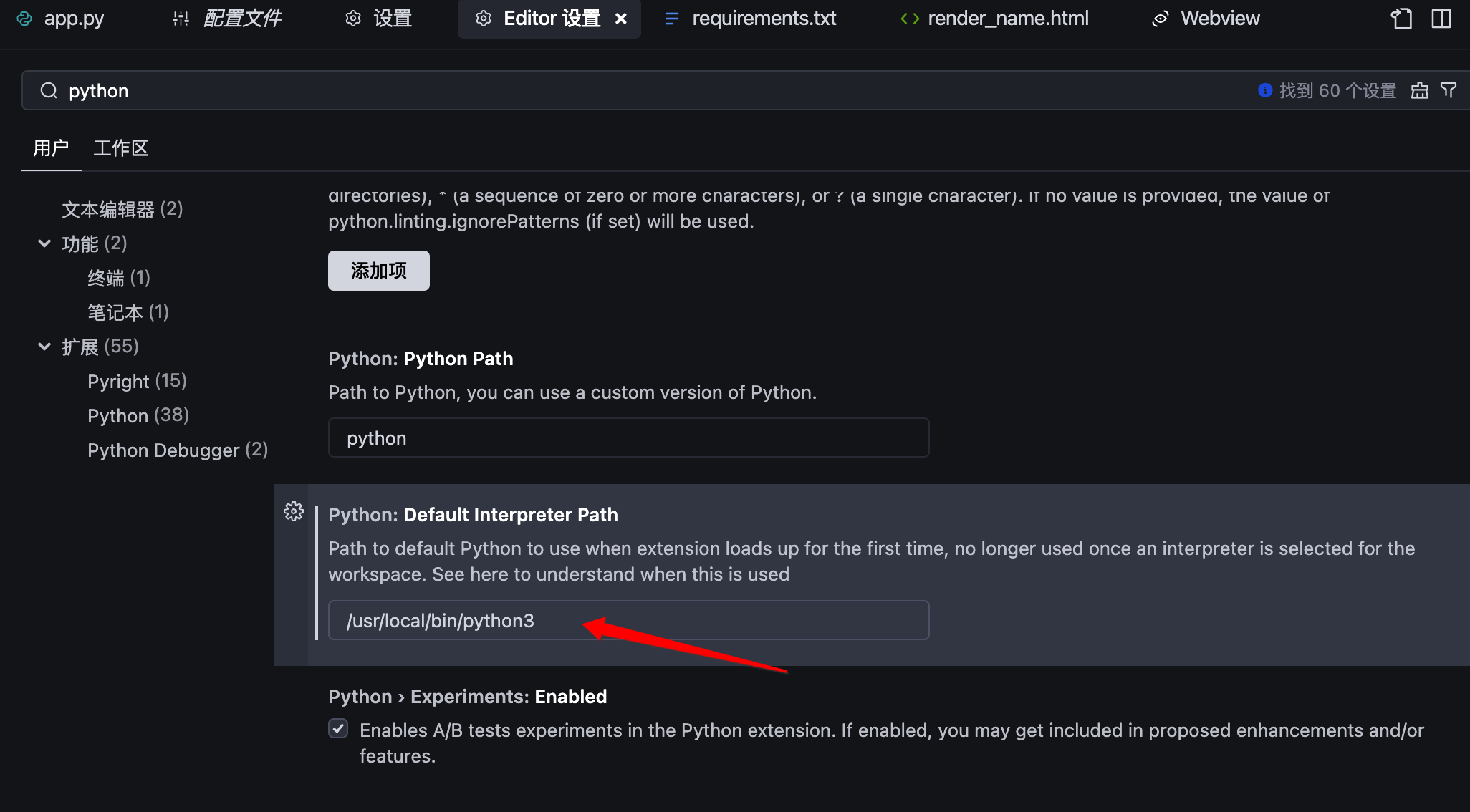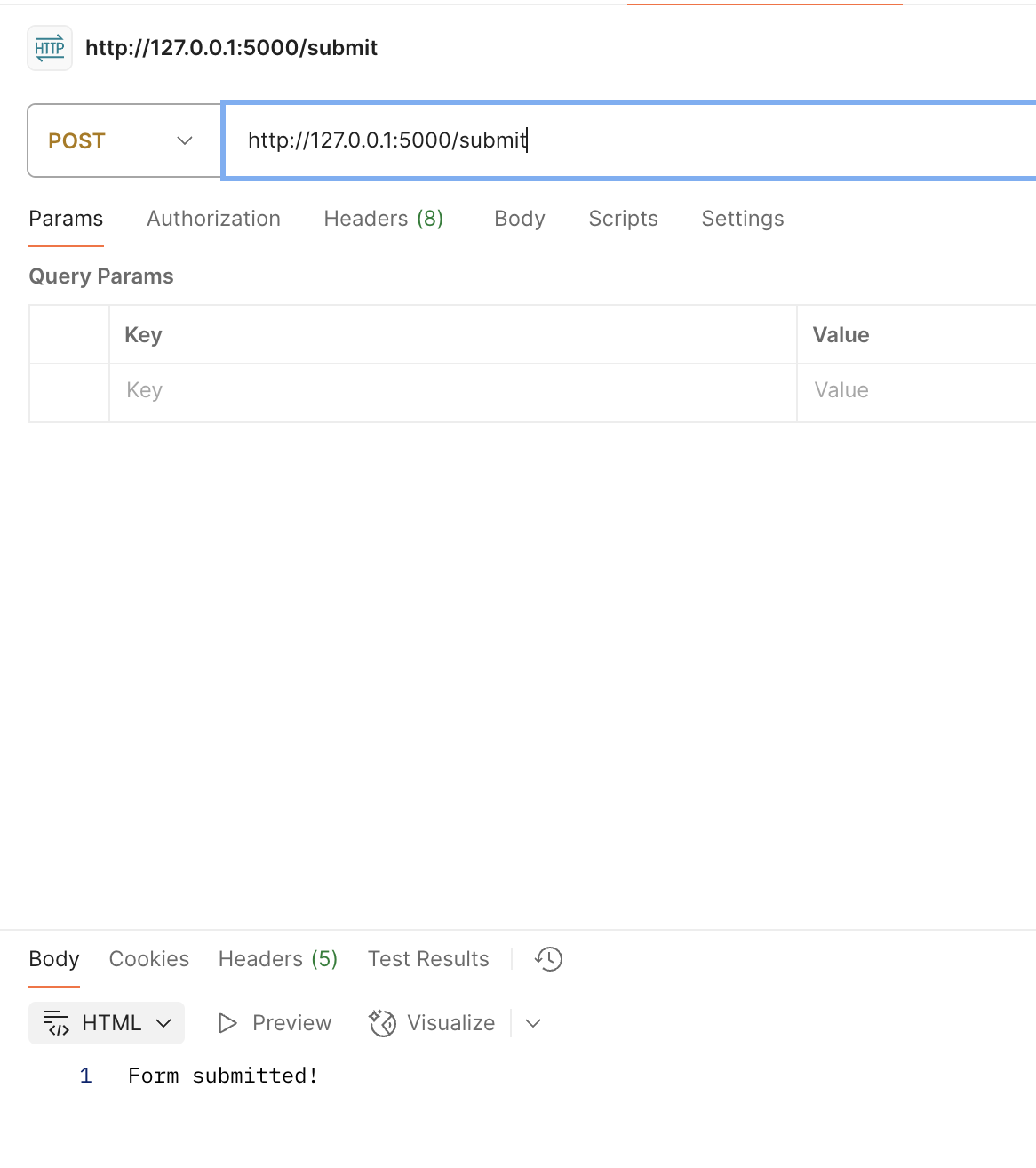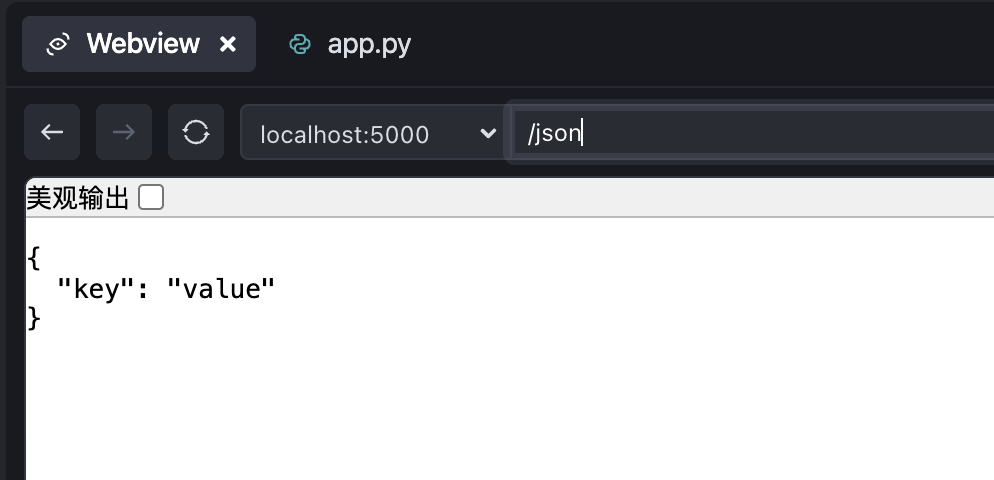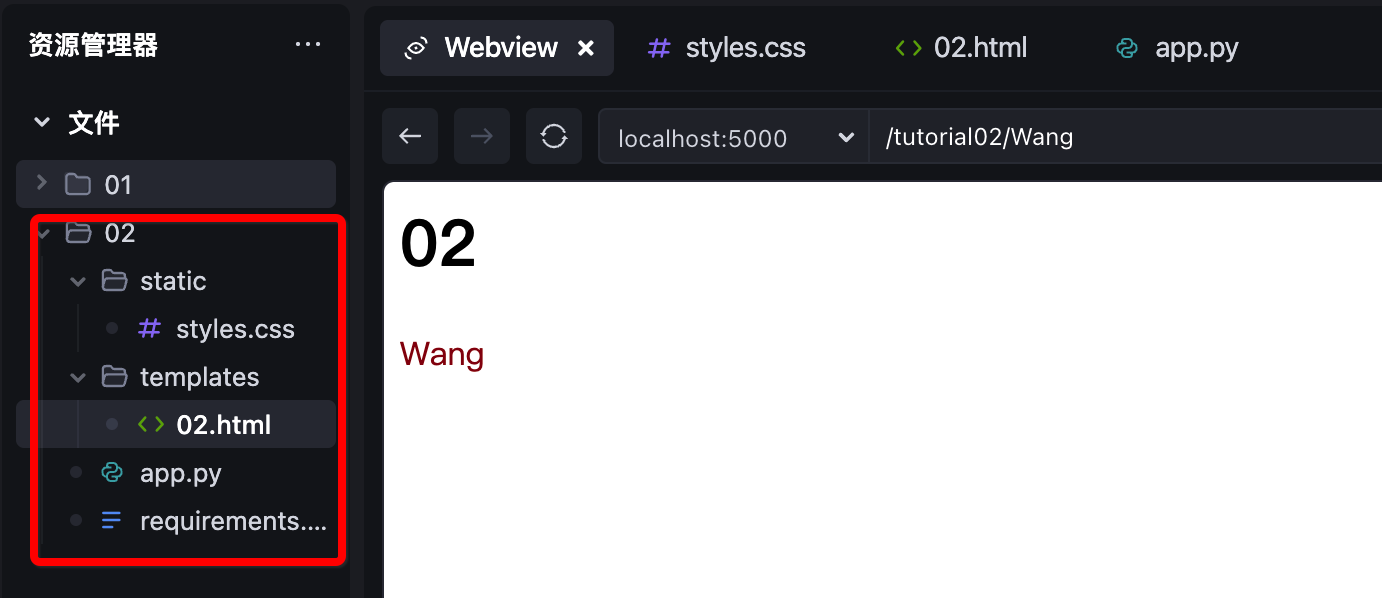前言 待业家中继续学习。
Flask 项目结构 1 2 3 4 5 6 7 8 9 10 11 12 13 14 15 16 17 18 19 20 21 22 23 my_flask_app/ │ ├── app/ │ ├── __init__.py │ ├── routes/ -- 将不同功能模块的路由分开管理 │ │ ├── __init__.py │ │ ├── main.py -- 主模块的路由 │ │ └── auth.py -- 认证相关的路由 │ ├── models/ -- 管理数据模型,通常与数据操作相关 │ │ ├── __init__.py │ │ └── user.py -- 用户模型 │ ├── templates/ -- 存放 HTML 模板文件 │ │ ├── layout.html -- 布局相关 │ │ └── home.html │ └── static/ -- 存放静态文件,如CSS和JavaScript │ ├── css/ │ └── js/ │ ├── config.py -- 配置文件,包含应用的配置信息 ├── requirements.txt -- 列出项目的依赖库 ├── migrations/ │ └── ... └── run.py -- 用于启动Flask应用
如何在Trae IDE中配置Python解释器 看到app.py 报错,因为没有导入flask库,但我的设备已经安装了,所以应该是需要配置下。在设置中找半天没有找到,后来搜索才知道原来是在Editor中,搜索python,然后将 Python: Default Interpreter Path的路径设置为设备安装的路径。
藏的有点深,可能从产品的角度上看是不想局限在某种语言,可以在Editor设置的说明文案部分增加编译器,解释器。
路由 Flask 路由是Flask应用的核心部分,用于处理不同URL的请求 ,并将请求的处理委托 给相应的视图函数
路由的相关说明
定义路由: 使用 @app.route(‘/path’) 装饰器定义URL和视图函数的映射。
路由参数: 通过动态部分在URL中传递参数的类型
路由规则: 使用类型转换器指定URL参数的类型
请求方法: 指定允许的HTTP请求方法。(GET,POST,DELETE,PUT)
路由函数返回: 视图函数可以返回不同类型的响应
静态文件和模板: 管理静态文件和动态渲染 HTML 模板
路由优先级: 确保路由顺序正确,以避免意外的匹配结果
定义路由 1 2 3 4 5 6 7 8 9 10 from flask import Flaskapp = Flask(__name__) @app.route('/' def home (): return 'Welcome to the Home Page!' if __name__ == '__main__' : app.run(debug=True )
路由参数 1 2 3 4 5 6 7 8 ... @app.route('/greet/<name>' def greet (name ): return f'Hello, {name} !' if __name__ == '__main__' : app.run(debug=True )
路由规则 路由规则支持不同
1 2 3 4 5 6 7 8 9 10 11 12 13 14 15 16 17 18 19 20 21 22 @app.route('/user/<int:user_id>' def user_profile (user_id ): return f'User ID: {user_id} ' @app.route('/user/<user_id>' def user_profile (user_id ): return f'User ID: {user_id} ' @app.route('/user/<user_id>' def user_profile2 (user_id ): return f'User ID2: {user_id} ' @app.route('/user/<float:user_id>' def user_profile (user_id ): return f'User ID: {user_id} '
请求方法 Flask 路由支持不同的 HTTP 请求方法,如 GET、POST、PUT、DELETE 等。可以通过 methods 参数指定允许的请求方法。
1 2 3 @app.route('/submit' , methods=['POST' ] def submit (): return 'Form submitted!'
此时设置了是POST请求,如果用Trae自带的浏览器访问,因为实际是GET请求,会报405错误码不允许
使用postman发送post请求验证能获得正常的返回
路由函数返回
字符串: 返回纯文本响应
HTML: 返回HTML页面
JSON: 返回JSON数据
Response对象: 自定义响应
1 2 3 4 5 6 7 8 9 10 11 12 from flask import jsonify, Response@app.route('/json' def json_response (): data = {'key' : 'value' } return jsonify(data) @app.route('/custom' def custom_response (): response = Response('Custom response with headers' , status=200 ) response.headers['X-Custom-Header' ] = 'Value' return response
返回json
返回自定义响应
静态文件和模板 静态文件(如 CSS、JavaScript、图片)可以通过 static 路由访问。模板文件则通过 templates 文件夹组织,用于渲染 HTML 页面。
styles.css
1 <link rel="stylesheet" href="{{ url_for('static', filename='styles.css ') }}">
这个格式默认是在找工程下的static目录下的styles.css
app.py
1 2 3 @app.route('/tutorial02/<name>' def hello (name ): return render_template('02.html' , name=name)
02.html
1 2 3 4 5 6 7 8 9 10 11 12 13 14 <html lang ="en" > <head > <meta charset ="UTF-8" > <meta name ="viewport" content ="width=device-width, initial-scale=1.0" > <link rel ="stylesheet" href ="{{ url_for('static', filename='styles.css') }}" > <title > 02</title > </head > <body > <h1 > 02</h1 > <p > {{ name }} </p > </body > </html >
路由优先级 Flask 按照定义的顺序匹配路由,第一个匹配成功的路由将被处理。确保更具体的路由放在更一般的路由之前。
1 2 3 4 5 6 7 @app.route('/user/<int:user_id>' def user_profile (user_id ): return f'User ID: {user_id} ' @app.route('/user' def user_list (): return 'User List'
/user/123 将匹配到 /user/<int:user_id>,而 /user 将匹配到 user_list。
参考
Flask项目结构 Flask路由







